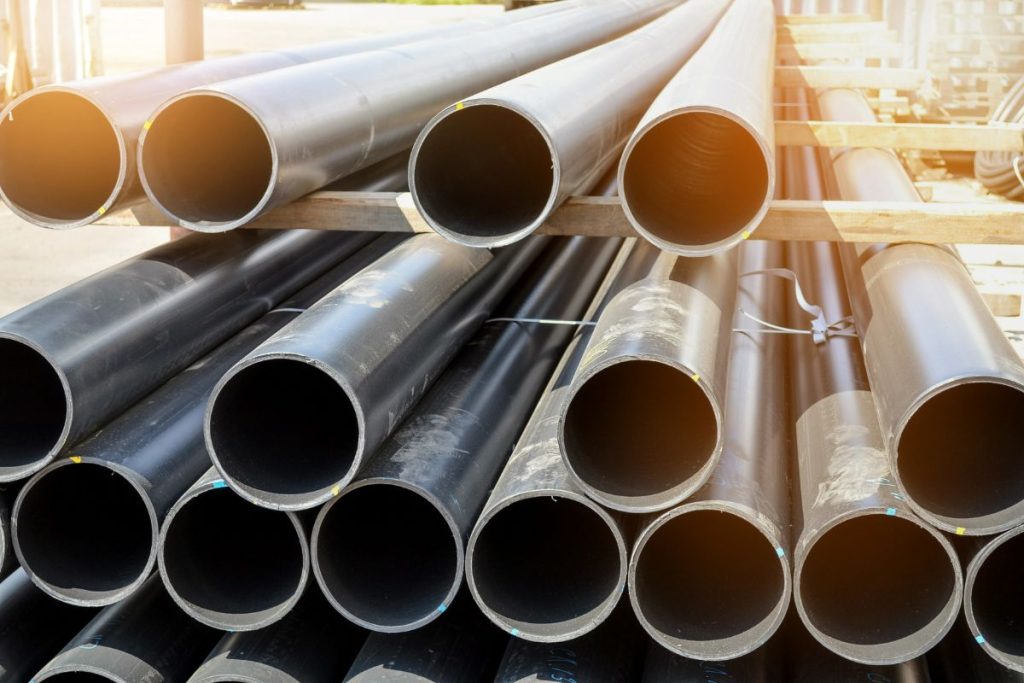How do you select the right steel pipes for scaffolding in large-scale projects?
- Material quality and type
- Load-bearing capacity
- Pipe diameter and wall thickness
- Ease of assembly and disassembly
- Supplier reliability
Overview
- In large-scale projects, selecting the right steel pipes for scaffolding ensures your structure’s safety, stability, and efficiency.
- Steel pipes, especially galvanized ones, offer the strength and durability needed to support heavy loads, with proper care providing a long-lasting solution.
- Selecting high-quality materials, like those provided by Supreme Steel Pipe Corporation, ensures that your scaffolding can withstand heavy loads and challenging conditions.
In large-scale construction projects, the integrity and safety of scaffolding systems are paramount. Selecting the right steel pipes for scaffolding is not just a matter of functionality, but of ensuring the safety and reliability of the entire structure. High-quality, durable steel pipes are essential for supporting workers and materials at great heights.
Knowing how to select steel pipes for scaffolding in large-scale projects—based on material quality, load-bearing capacity, pipe diameter and wall thickness, and beyond— will enhance the stability of your project.
This guide will walk you through the critical factors to consider, ensuring it meets both safety and performance standards.
Material Quality and Type
The right material choice and type directly influence the safety, durability, and overall performance of the project. Galvanized steel pipes, in particular, are a popular choice for scaffolding due to their superior corrosion resistance. The zinc coating applied to the steel acts as a shield, protecting the pipes from weathering and rust. This protective layer not only preserves the structural integrity of the scaffolding but also ensures its long-term reliability. With proper care and maintenance, these pipes can last up to 100 years, making them an ideal, long-lasting solution for large-scale scaffolding projects.
Load Bearing Capacity
The pipes used in scaffolding must be strong enough to safely support the combined weight of workers, tools, and materials without compromising the system’s structural integrity. Scaffolding load-bearing capacity is classified into three categories:
- Light-duty scaffolds: Designed to support loads up to 120 kg per square meter.
- Medium-duty scaffolds: Rated for loads of up to 240 kg per square meter.
- Heavy-duty scaffolds: Engineered to handle loads exceeding 240 kg per square meter, making them indispensable for larger, more demanding projects.
Higher-grade steel provides superior strength and stability, ensuring the scaffolding can withstand the required loads. Additionally, the design, geometry, and configuration of the scaffolding system, coupled with external factors like wind and rain, play a significant role in determining its overall capacity and safety.
Pipe Diameter and Wall Thickness
A wider pipe diameter provides a greater surface area, enhancing load distribution and reducing strain on individual pipes. This feature is critical for scaffolding used in heavy-duty applications, where multiple personnel and equipment are involved.
Equally vital is the pipe’s wall thickness, as thicker walls contribute to greater strength and durability. This added thickness enhances the pipe’s ability to withstand forces such as bending and torsion, which are common during use.
Together, these factors form the foundation of a scaffolding system designed for safety and efficiency in demanding construction environments.
Ease of Assembly and Disassembly
Choosing lightweight yet strong steel pipes accelerates the construction process by enabling faster assembly and disassembly of scaffolding systems. This efficiency reduces project timelines and lessens the physical strain on workers, allowing them to perform tasks more effectively while minimizing fatigue-related risks.
The ease and speed of assembly not only boost productivity but also enhance safety by reducing the duration workers spend at elevated heights.
Additionally, incorporating modular systems with pre-assembled components or interlocking designs further simplifies the setup process, eliminating the need for complex tools and ensuring that scaffolding is installed quickly and securely.
Together, these factors contribute to a more streamlined, safe, and efficient construction workflow.
Supplier Reliability
A trusted supplier like Supreme Steel Pipe Corporation ensures that every product undergoes rigorous testing to meet stringent safety and performance standards. For instance, hydrostatic testing is conducted to identify leaks and weaknesses by pressurizing pipes with water, and simulating real-world high-stress conditions to validate their structural integrity.
In addition, non-destructive testing (NDT) methods, such as ultrasonic and magnetic particle inspections, are employed to detect surface or structural flaws without compromising the pipe’s usability. Meanwhile, destructive testing, like Charpy impact testing, evaluates the material’s toughness and resistance to impacts, ensuring its durability in demanding environments.
By adhering to both local building codes and international standards, we guarantee our steel pipes deliver unmatched reliability and performance for scaffolding systems, making them an ideal choice for large-scale projects.
Key Takeaway
Selecting the right steel pipes for scaffolding in large-scale projects is crucial for ensuring safety, stability, and overall project efficiency. Partnering with our team ensures that your steel pipes meet the highest standards of quality and durability.
Make informed decisions about how to select steel pipes for scaffolding in large-scale projects. Reach out to us today to discuss your scaffolding needs.
